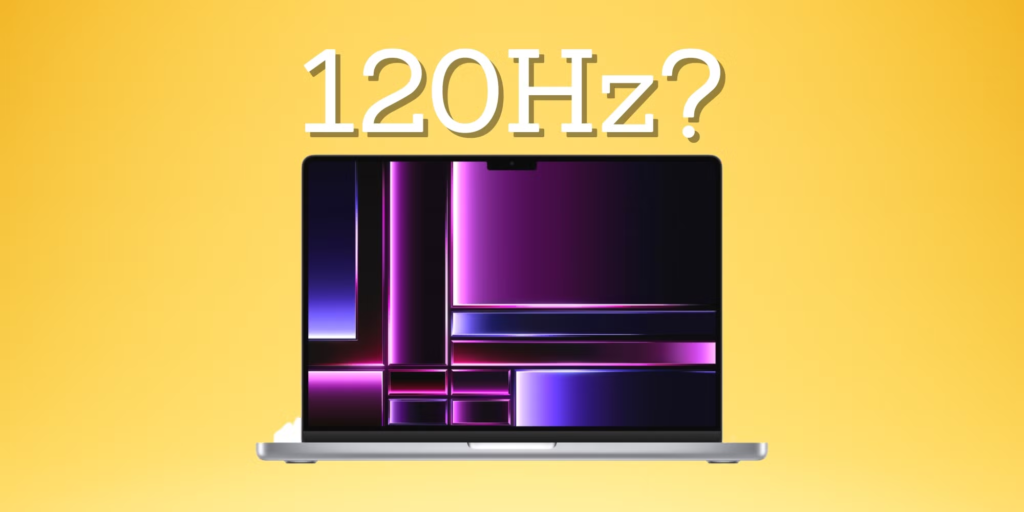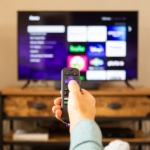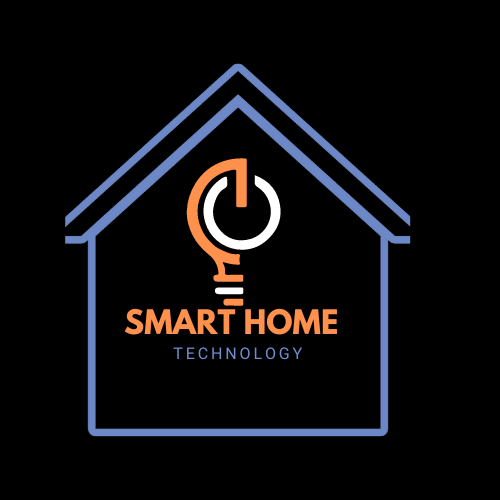
image credit: Screenrant
Table of Contents
Welcome to streaming devices with a refresh rate of 120 Hz. High refresh rates and how they may improve your streaming experience are the topics of this essay. So, why is a refresh rate of 120 Hz so important? Consider it your secret sauce for creating more realistic, fluid, and snappy material.
With 120Hz, you receive twice as many frames per second as 60Hz, which means you get buttery smooth images that may take your viewing experience to a whole new level.
Popular streaming devices that support 120Hz
Streaming devices that support 120Hz refresh rates are essential for users seeking ultrasmooth visuals, particularly for high-framerate content and gaming. As of December 2024, several devices cater to this need:
1. Gaming Consoles with Streaming Capabilities
- Xbox Series X/S:
- Outputs high refresh rate video at 120Hz across various resolutions, including 1080p, 1440p, and 4K.
- Doubles, a streaming device, supports popular apps like Netflix, Hulu, and Disney+.
- Ideal for gamers who want a seamless switch between gaming and streaming with enhanced visuals.
- PlayStation 5:
- Supports 120Hz output at multiple resolutions for smooth and responsive visuals.
- Provides access to streaming services such as Netflix, Disney+, and more through its user-friendly interface.
- Offers an all-in-one solution for gaming and streaming enthusiasts seeking high-quality performance.
Both consoles combine gaming excellence with streaming versatility, making them ideal choices for entertainment hubs.
2. Dedicated Streaming Devices
- NVIDIA Shield TV Pro:
- Renowned for its powerful hardware, supporting 4K HDR streaming and AI upscaling.
- Outputs primarily at 60Hz for most streaming content.
- Handles 120Hz in specific scenarios, such as gaming via NVIDIA’s GeForce NOW service, when paired with compatible displays.
- Apple TV 4K (3rd Generation):
- Supports high frame rates, including 120Hz, for smoother visuals.
- Particularly beneficial for gaming through Apple Arcade and AirPlay.
- Most streaming content remains at 60Hz due to source limitations.
These devices provide cutting-edge features that enhance the quality and versatility of streaming and gaming experiences.
Benefits of Higher Refresh Rates for Streaming Content
- Reduced Motion Blur: Higher refresh rates minimize motion blur, ensuring fast-moving objects appear more precise and sharper.
- Smoother Transitions: With refresh rates like 120Hz, transitions between frames are seamless, making for a more immersive viewing experience.
- Enhanced Clarity: A higher refresh rate improves image clarity, especially during fast-paced action scenes, sports, or gaming.
- Improved Responsiveness: Higher refresh rates reduce input lag for interactive streaming and gaming platforms, delivering quicker responses to your actions.
- More Realistic Visuals: Fast movements look more natural and lifelike, enriching the viewing experience.
- Reduced Eye Strain: Smoother motion reduces flickering and visual strain, making extended viewing sessions more comfortable.
- Better for Sports and Action Content: High refresh rates excel at handling dynamic sequences, ensuring you don’t miss any detail in fast-paced sports or action scenes.
- Optimized for Modern Displays: Newer TVs and monitors are built to handle higher refresh rates, maximizing the performance of your hardware.
- Enhanced Gaming Streams: For those who stream gameplay, higher refresh rates improve the experience both for the streamer and the audience.
- Improved Compatibility with NextGen Media: Future streaming content will increasingly utilize higher frame rates, making higher refresh rates a forward-thinking choice.
- Greater Enjoyment for 4K and HDR Content: The combination of high resolution and refresh rates maximizes the visual impact of UHD and HDR streaming content.
- Seamless MultiDevice Streaming: High refresh rates improve synchronization across multiple devices, providing a uniform viewing experience.
- FutureProofing Your Setup: Investing in a higher refresh rate prepares your setup for evolving content standards and advancements in streaming technology.
- Elevated Overall Entertainment Quality: Whether watching movies, TV shows, or live streams, the viewing experience feels premium and cutting-edge.
Higher refresh rates redefine your streaming content experience, blending technology and visual pleasure to keep you at the forefront of entertainment innovation.
Considerations for 120Hz Streaming:
1. Content Availability: While devices may support 120Hz output, streaming services often limit content to 60Hz. High frame rate content is more prevalent in gaming than in streaming media.
2. Hardware Requirements: To fully utilize 120Hz capabilities, ensure your TV or monitor supports 120Hz input and has HDMI 2.1 ports. Additionally, high-speed HDMI cables compatible with HDMI 2.1 standards should handle the increased bandwidth required for 4K at 120Hz.
3. Device Settings: Proper configuration is crucial. For instance, some TVs require setting the HDMI signal format to ‘Enhanced’ to recognize 4K 120Hz signals.
In summary, while certain streaming devices and gaming consoles support 120Hz output, the availability of high-framerate content remains limited. For the best experience, ensure all components in your setup—from the streaming device to the display and cables—are compatible with 120Hz signals.
Comparison of 120Hz capabilities across different streaming devices
Not all streaming devices are created equal when it comes to 120Hz capabilities. Some may excel in display technologies, while others might boast advanced audio and video enhancements. Let’s examine how different streaming devices stack up in this department.
| Device | Pros | Cons | Additional Notes |
| Xbox Series X/S | Supports 120Hz across resolutions (1080p, 1440p, 4K). Extensive app library (Netflix, Disney+, etc.). | It is limited to 120Hz gaming apps; most streaming services cap at 60Hz. For 120Hz output, it requires HDMI 2.1 and a compatible display. | Best choice for gamers who also want streaming features. |
| PlayStation 5 | Seamless gaming and streaming experience at high refresh rates. Supports 120Hz for gaming (dependent on game and TV compatibility). | Streaming apps don’t currently support 120Hz content. Limited 120Hz adoption in nongaming scenarios. | Excellent for PlayStation users wanting gaming and multimedia. |
| NVIDIA Shield TV Pro | AI upscaling enhances 4K HDR content for better visuals. Broad app support, including gaming services. | 120Hz is primarily available for gaming or select scenarios. Expensive compared to standard streaming devices. | Ideal for tech-savvy users or those gaming with GeForce NOW. |
| Apple TV 4K (3rd Gen) | Supports 120Hz refresh rates for gaming via Apple Arcade and AirPlay. Superior interface and integration with Apple devices. | Most streaming content is capped at 60Hz. Limited high refresh rate content availability in general. | Best for Apple ecosystem users with a focus on multimedia and light gaming. |
Relevant Considerations:
Content Availability:
· While the devices support 120Hz, most streaming platforms like Netflix and Hulu do not offer high-framerate content. High refresh rates are mainly beneficial for gaming and specific video formats.
Hardware Requirements:
· A 120Hz-capable TV or monitor with HDMI 2.1 ports is essential to utilize the high refresh rates.
· Highspeed HDMI cables are required to handle the bandwidth of 4K at 120Hz.
Practical Use Cases:
· Gamers benefit the most from 120Hz devices, especially for fluid gameplay and responsiveness.
· Nongaming content often does not fully exploit 120Hz capabilities.
Price vs. Features:
· Devices like NVIDIA Shield TV Pro and Apple TV 4K are premium options, offering advanced features but might be overkill for casual users.
Audio and video enhancements in 120Hz-supported streaming devices.

image credit: Amazon.com
It’s not just about the visuals; audio and video enhancements also play a key role in elevating your streaming experience. From Dolby Atmos support to HDR compatibility and beyond, these devices are geared up to deliver a multisensory feast for your eyes and ears.
How to Enable and Optimize 120Hz on Streaming Devices
- Verify Device and Display Compatibility:
- Ensure your streaming device supports 120Hz output. Check the manufacturer’s specifications.
- Confirm that your TV or monitor is 120Hz capable and supports the resolution you intend to use (e.g., 4K, 1080p).
- Use a HighSpeed HDMI Cable:
- Use an HDMI 2.1 cable to ensure smooth 120Hz transmission for 4K content. Older cables may not effectively support higher refresh rates.
- Update Device Firmware:
- Go to your streaming device’s settings menu and check for software updates. Updates often improve compatibility with higher refresh rates.
- Access the Display Settings:
- Navigate to the settings menu on your streaming device. Look for options like Display, Video Settings, or Output Settings.
- Select a resolution that supports 120Hz (e.g., 1080p 120Hz or 4K 120Hz).
- Enable 120Hz Output:
- Activate the 120Hz option if available. This setting may be labeled as High Frame Rate (HFR) mode or similar.
- Optimize Streaming App Settings:
- Update streaming apps to their latest versions.
- Check if the app has advanced settings for higher refresh rates or frame rates.
- Adjust TV or Monitor Settings:
- Access your TV or monitor’s settings and enable Game Mode or Performance Mode to minimize latency and enhance refresh rate performance.
- Ensure any motion smoothing or frame interpolation features are turned off, as they may interfere with the native 120Hz performance.
- Optimize Network Connectivity:
- Use a wired Ethernet connection for stable and fast internet speeds.
- Position the router close to the streaming device for WiFi or use a 5GHz band for less interference.
- Test Compatibility with Content:
- Not all streaming content supports 120Hz. Test with compatible content, such as high-framerate videos or gaming streams, to confirm the setup is working correctly.
- Enable HDR (Optional):
- If your display supports HDR and 120Hz simultaneously, enable HDR for enhanced picture quality while maintaining a high refresh rate.
- Troubleshoot if Necessary:
- If the display doesn’t output at 120Hz, double-check the resolution settings, HDMI cable type, and device compatibility.
- Restart the device and display to ensure settings take effect.
- Test and Calibrate Performance:
- Use online tools or built-in diagnostics on the streaming device to confirm that it’s running at 120Hz.
- Adjust the display’s brightness, contrast, and sharpness settings to complement the high refresh rate.
Following these steps will ensure your streaming device is optimized for 120Hz, delivering smoother motion and a superior viewing experience.
Tips for Maximizing Performance and Quality at 120Hz Refresh Rate
- Use Compatible Hardware:
- Ensure your TV, monitor, or projector supports a 120Hz refresh rate.
- Check that your streaming device, console, or computer can output at 120Hz.
- HighSpeed HDMI Cables:
- Use HDMI 2.1 cables or higher for seamless 120Hz transmission without lag or stutter.
- Adjust Display Settings:
- Enable 120Hz mode in your device’s settings.
- Match your output resolution to the native resolution of your display for the best clarity.
- Upgrade Your Internet Connection:
- Use a high-speed internet connection (at least 25 Mbps for 4K content) to avoid buffering.
- Prefer wired Ethernet over WiFi for stable streaming performance.
- Optimize Streaming Apps:
- Ensure apps are updated to their latest versions, as updates often improve compatibility and performance.
- Configure app settings to prioritize higher frame rates when available.
- Enable Game or Performance Mode:
- Switch to Game or Performance mode on TVs or monitors to reduce input lag and maximize refresh rate efficiency.
- Turn Off Unnecessary Features:
- Disable motion smoothing or image processing features on your display, which can interfere with 120Hz performance.
- Check Content Source:
- Verify that the content supports 120Hz; some streaming services limit content to 60Hz.
- Set games or applications to output at 120Hz for a smoother experience for gaming or PC use.
- Update Firmware and Drivers:
- Keep your streaming devices, TVs, and consoles updated with the latest firmware for optimal compatibility.
- Ensure GPU and system drivers are current on PCs.
- Test and Adjust Settings:
- Use built-in diagnostic tools or online test patterns to confirm the refresh rate.
- Adjust brightness, contrast, and sharpness to complement the high refresh rate without causing strain.
- Manage Room Lighting:
- Reduce glare and reflections on the screen by controlling ambient lighting, which enhances the visual experience.
- Monitor Heat and Power:
- Prevent overheating by ensuring proper device ventilation; higher refresh rates may demand more processing power.
- Use surge protectors to safeguard equipment.
Implementing these tips ensures you get the most out of your 120Hz setup, providing smoother visuals and an unparalleled viewing or gaming experience.
Potential developments in content creation for 120Hz streaming

image credit: EI output
Content creators are searching for innovative ways to employ 120Hz streaming technology to deliver captivating experiences and stunning visuals to viewers. From video games to movies, the possibilities are endless for creating engaging and immersive content for devices that support 120Hz.
FAQ’s
What devices support 120Hz?
Devices that support 120Hz include:
High-end smartphones (e.g., iPhone 13 Pro and newer, Samsung Galaxy S20 and newer)
Gaming consoles (e.g., PlayStation 5, Xbox Series X, and Xbox Series S)
High refresh rate monitors
Some smart TVs with HDMI 2.1 support (e.g., LG OLED, Samsung QLED, and newer models from Sony)
Are any streaming services 120Hz?
Most streaming services do not directly offer content in 120Hz, but some platforms allow 120Hz playback for compatible hardware. For example:
YouTube: Supports 120Hz on specific videos, but it’s rare.
Netflix and Disney+: Primarily support 60Hz for most content, but 120Hz support may be possible if the device supports it and the video content is in a suitable format (e.g., certain 4K HDR content).
Amazon Prime Video: Offers support for 4K HDR, but 120Hz is not a common standard for streaming content.
What is the fastest streaming device?
The fastest streaming devices in terms of performance and speed include:
Apple TV 4K (latest generation)
Amazon Fire TV Stick 4K Max
NVIDIA Shield TV Pro
Google Chromecast with Google TV
These devices offer fast performance, excellent streaming quality, and support for high-resolution content (4K, HDR, Dolby Vision).
To stream 4K at 120Hz to your TV:
Ensure your TV supports 4K at 120Hz (typically via HDMI 2.1 ports).
Use a compatible streaming device that supports 4K 120Hz (e.g., PlayStation 5, Xbox Series X).
Choose content available in 4K at 120Hz (e.g., specific games or supported content on platforms like YouTube).
Ensure you are using a high-speed HDMI cable (HDMI 2.1).
Can HDMI support 4K at 120Hz?
Yes, HDMI 2.1 can support 4K at 120Hz. It is essential to use HDMI 2.1 cables and devices that support the standard for 4K resolution at a 120Hz refresh rate.
Can you make a 60Hz TV to 120Hz?
You cannot physically upgrade a 60Hz TV to support 120Hz unless the TV has hardware that supports it. However, some TVs use motion or software-based frame rate interpolation to simulate a higher refresh rate, though it’s not the same as native 120Hz support.
Is 60Hz vs 120Hz noticeable on TV?
Yes, the difference between 60Hz and 120Hz is noticeable, especially in fast-moving content like sports, action movies, or video games. A 120Hz display will offer smoother motion and a better gaming experience with reduced motion blur.
How to make 60Hz feel like 120Hz?
To simulate a 120Hz effect on a 60Hz TV, you can enable motion smoothing or motion interpolation settings on your TV. This software-based feature tries to insert extra frames between original frames to simulate higher refresh rates, but it can sometimes create unnatural or “soap opera” effects.
Can I play PS5 on a 60Hz TV?
Yes, you can play PS5 on a 60Hz TV, but you won’t be able to take advantage of 120Hz gameplay or 4K 120Hz content. The PS5 will be limited to 60Hz output (if the TV only supports 60Hz) but will still offer high-quality 4K and HDR (at 60Hz).
Conclusion
In conclusion, the advancement of streaming devices to support refresh rates of 120 Hz opens up new possibilities for better viewing and gaming experiences. As technology advances, it’s exciting to see how these devices will affect how we interact with and consume information in the future. Keep checking for additional details on the latest developments and fashions in 120Hz streaming technology.
For the best experience with 120Hz support, ensure compatibility across all components in your setup, including your TV, HDMI cables, and the device itself. Gamers and tech enthusiasts will find these devices most valuable, while casual users may not benefit as much due to limited high refresh rate content on streaming platforms.
Read more about what a smart TV can do.
Share Your Experience!
We would be delighted to hear from you! How was your experience using a streaming device that can handle 120Hz? When you watched the video at 120Hz, did you notice a noticeable difference in quality or smoothness? Please feel free to offer any advice, difficulties, or suggestions you may have with streaming 120Hz material.




Pingback: WHY DO I NEED A STREAMING DEVICE - smarthomze.com
Pingback: HOW DOES STREAMING DEVICE WORK? - smarthomze.com